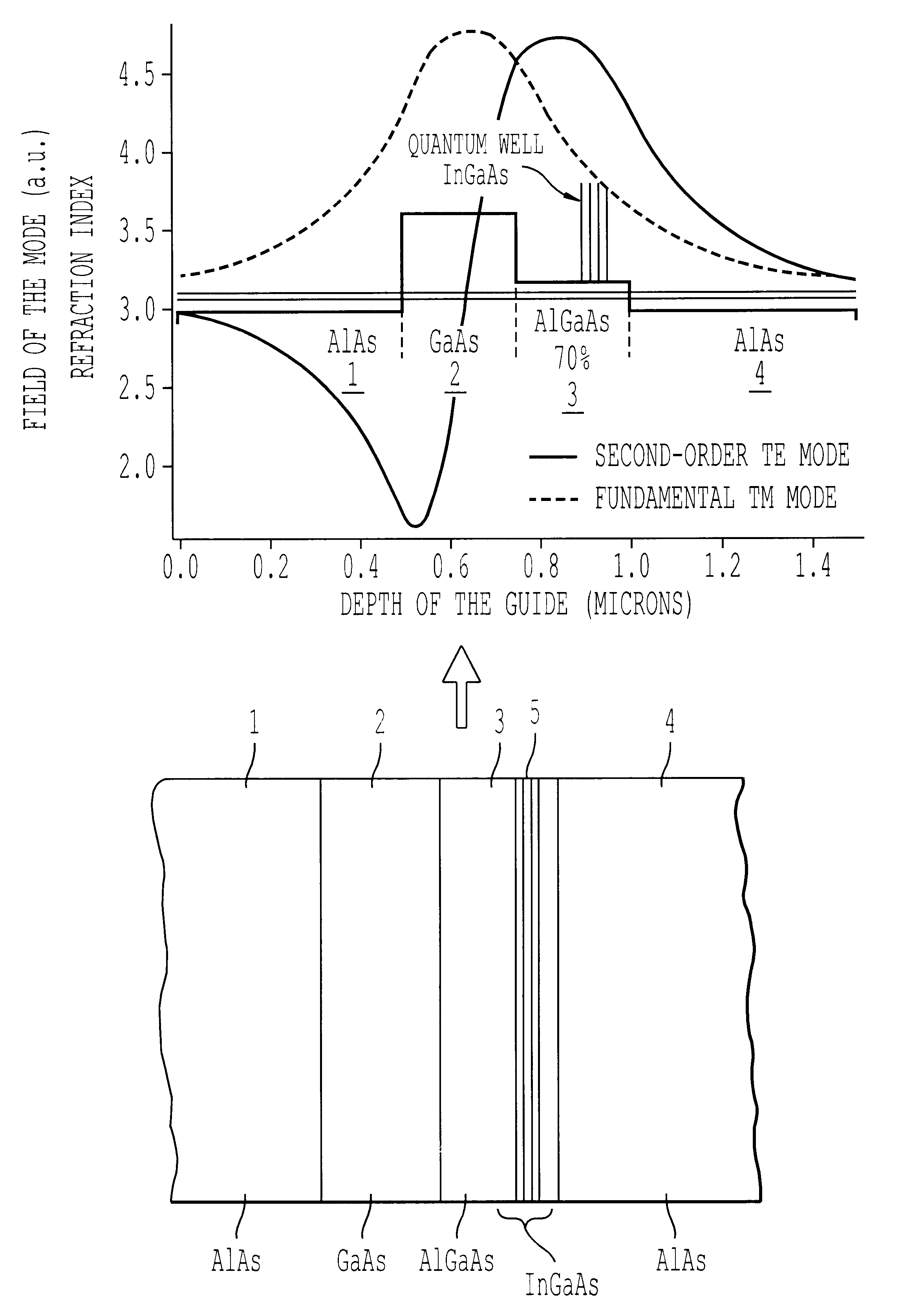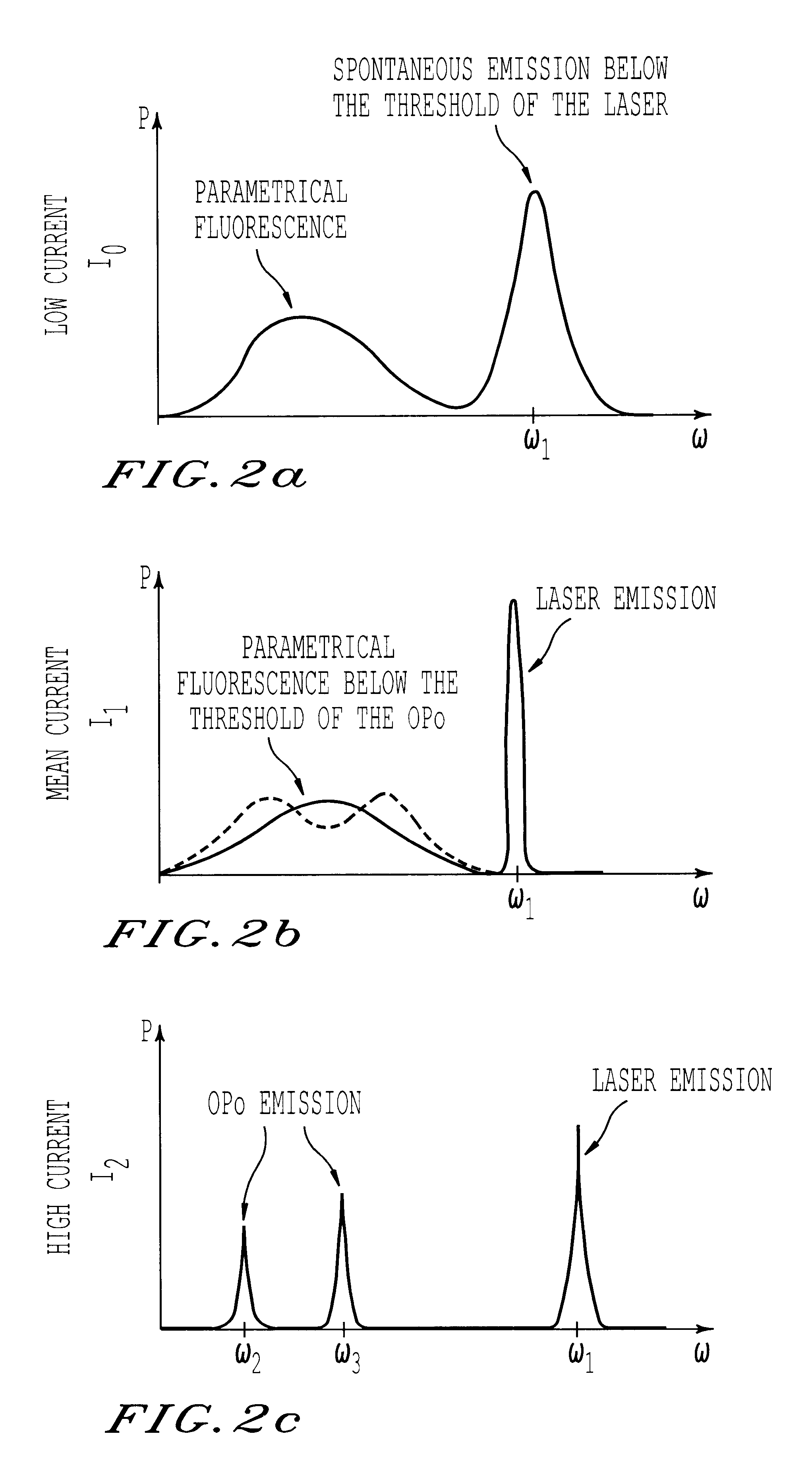Parametrical generation laser
a laser and parametrical technology, applied in semiconductor lasers, instruments, optics, etc., can solve the problems of process loss, non-linear interaction becoming highly destructive, and difficulty in obtaining parametrical generation
- Summary
- Abstract
- Description
- Claims
- Application Information
AI Technical Summary
Problems solved by technology
Method used
Image
Examples
Embodiment Construction
The invention is therefore a semiconductor laser structure in which the deposited semiconductor layers have been chosen so that:
1) the relationships of dispersion of the modes are propagated in the waveguide of the laser verifying the modal phase matching relationship for a parametrical generation process;
2) the overlapping integral (2) is optimized.
FIGS. 1a and 1b show an exemplary embodiment of a laser according to the invention.
This laser comprises chiefly a stack of semiconductor materials comprising at least two layers 2, 3 made of non-linear materials, and a stack of quantum wells 5 . The two layers 2, 3 are gripped between two confinement layers 1 and 4. This stack of quantum wells 5 is located in the layer of non-linear material with a lower index. In general, if there were two layers of non-linear materials, the quantum well would preferably not be in the layer with the higher index.
The thicknesses and the indices of the layers 2 and 3 made of non-linear material are such t...
PUM
| Property | Measurement | Unit |
|---|---|---|
| thickness | aaaaa | aaaaa |
| wavelength | aaaaa | aaaaa |
| wavelength | aaaaa | aaaaa |
Abstract
Description
Claims
Application Information
 Login to View More
Login to View More - R&D
- Intellectual Property
- Life Sciences
- Materials
- Tech Scout
- Unparalleled Data Quality
- Higher Quality Content
- 60% Fewer Hallucinations
Browse by: Latest US Patents, China's latest patents, Technical Efficacy Thesaurus, Application Domain, Technology Topic, Popular Technical Reports.
© 2025 PatSnap. All rights reserved.Legal|Privacy policy|Modern Slavery Act Transparency Statement|Sitemap|About US| Contact US: help@patsnap.com



